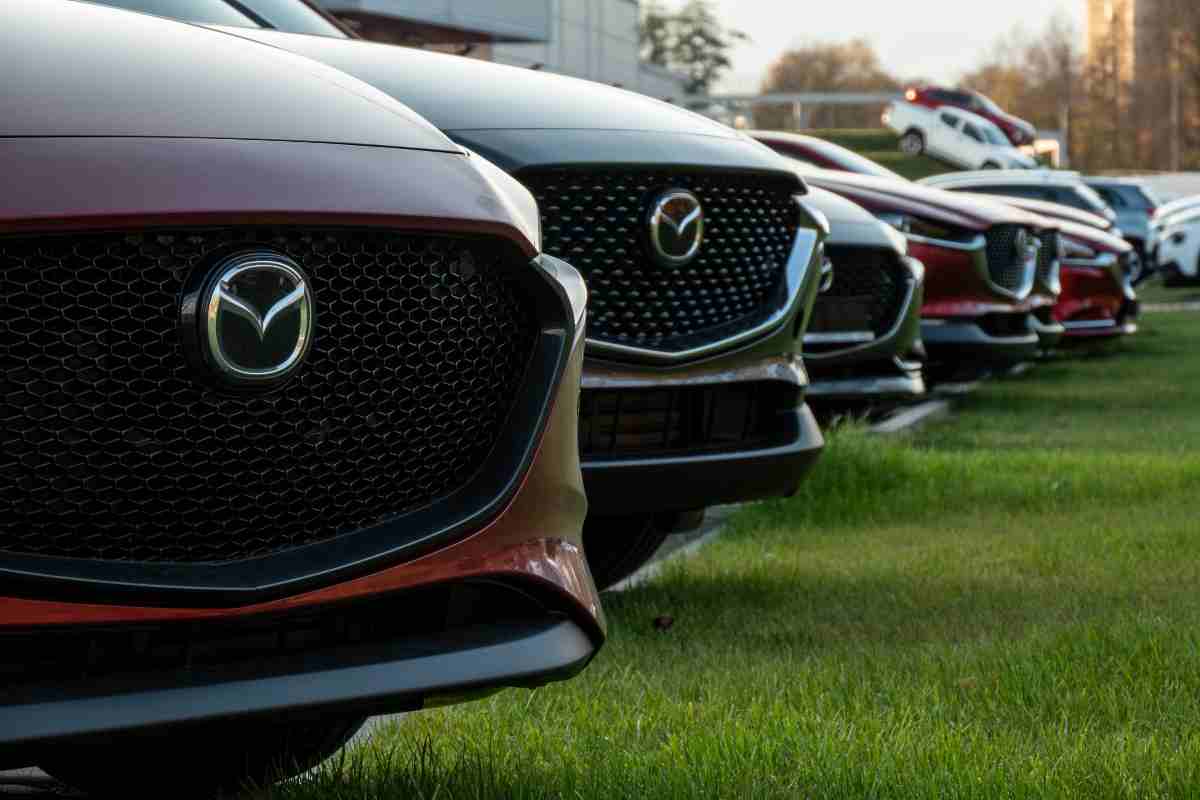Mazda is a brand known for sporty, fun-to-drive vehicles, but it’s also earned a reputation for engineering excellence and surprising engine durability.
However, not all Mazda engines are created equal. While some powerplants prove to be reliable workhorses that run strong for hundreds of thousands of miles, others have been plagued by performance and reliability issues.
When it comes to reliability, Mazda tends to fly under the radar. Known for their sleek designs and driver-focused engineering, these cars often punch above their weight — especially under the hood. Some will run strong past 300,000 miles with nothing more than routine maintenance. Others? Let’s just say they were more about experimentation than endurance.
In this piece, we’re breaking down the best and worst of Mazda’s engine lineup — the underdog powerplants that keep ticking, and the ones that give out before their time. Whether you’re a fanboy, a buyer doing your homework, or just here for the mechanical drama, this list is for you.
Mazda Engines That Surprise With Longevity
When you think of engines that go the distance, brands like Toyota or Honda might come to mind first. But Mazda? That’s a curveball — and that’s exactly what makes it interesting.
Mazda has built a reputation on driver engagement and clever engineering, often prioritizing soul and character over cold, clinical reliability. And yet, some of their engines have proven to be quietly indestructible, racking up hundreds of thousands of miles with nothing more than regular oil changes and a bit of mechanical sympathy.
1. 2.0L MZR Inline-4 (LF Engine)
Used in: 2004–2013 Mazda3, Mazda5, Mazda6
Mazda’s 2.0L MZR engine is a naturally aspirated four-cylinder that earned respect for its simplicity and durability.
Free from turbochargers or complex variable valve timing systems, it relies on a tried-and-true design that resists common long-term failures.
With routine maintenance, it’s not uncommon for these engines to surpass 250,000 miles without major issues. Owners frequently report minimal oil consumption and consistent performance over the long haul.
The Mazda LF-DE is a 2.0-liter inline four-cylinder gasoline engine and part of Mazda’s L-series engine family. It made its debut in the 2003 model year Mazda3. Over time, Mazda developed additional versions of this engine, including the LF-VE and LF-VD.
Constructed with a high-grade aluminum alloy cylinder block and featuring cast iron sleeves, the LF-DE combines durability with a lightweight design. It shares its 83.1 mm (3.27 in) stroke with Mazda’s 1.8-liter engines (L8-DE, L8-VE), but differs by using a larger 87.5 mm (3.44 in) bore. Unlike the larger 2.5-liter L5-VE engine, the 2.0-liter LF-DE does not include balancer shafts.
Internally, the LF engine is built with an iron crankshaft that features four counterweights and a torsional damper — although in 2009, Mazda upgraded it to a forged steel crankshaft.
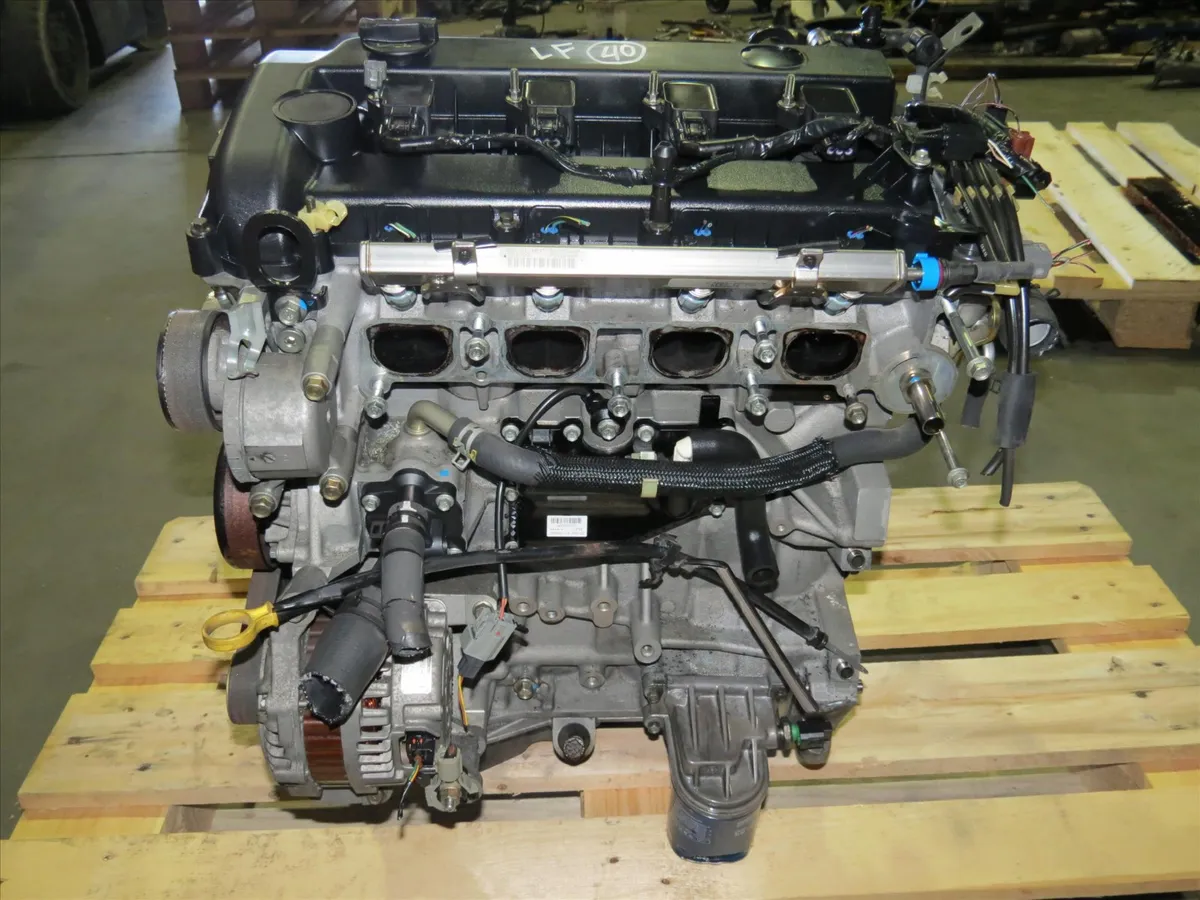
The engine also includes forged connecting rods with fraction-split ends, and aluminum alloy pistons equipped with graphite-coated skirts to help reduce friction. These pistons are installed with a 0.8 mm offset for improved performance.
The cylinder head is made of aluminum-silicon alloy and features 16 valves operated by dual overhead camshafts. These camshafts are driven by a link grounding-type chain that is automatically tensioned via engine oil pressure and a spring mechanism — a system designed to be maintenance-free.
The intake and exhaust valves are arranged at a 39-degree angle. The engine uses solid bucket tappets, and valve clearances require periodic adjustment. The LF-DE has an intake valve lift of 8.8 mm, whereas the LF-VE version increases this to 9.1 mm. Both variants share the same exhaust valve lift of 7.7 mm.
The LF-VE variant comes with Mazda’s S-VT (Sequential Valve Timing) system and a variable length intake manifold. While both the LF-DE and LF-VE use a sequential multi-point electronic fuel injection system, the LF-VD steps it up with a DISI (Direct Injection Spark Ignition) setup.
All LF engine versions include an electronic ignition system with individual ignition coils for each cylinder. Additionally, they are fitted with stainless steel exhaust manifolds/headers and catalytic converters.
Also Read: Top 10 Most Reliable Used Cars You Can Buy for Under $10,000 in 2025
2. 2.5L Skyactiv-G Inline-4
Used in: 2014–present Mazda3, Mazda6, CX-5, CX-30
The 2.5L Skyactiv-G engine showcases Mazda’s forward-thinking engineering with a focus on fuel efficiency without compromising durability.
Despite having high compression ratios (13:1 or higher), this engine resists premature wear and delivers dependable power.
Many owners report exceeding 200,000 miles with only basic maintenance. Its clean-burning design also helps reduce carbon buildup a common long-term killer in direct-injection engines.
The Mazda SkyActiv-G 2.5 engine is one of the core powerplants developed under Mazda’s SkyActiv technology platform. In production since 2011 at the company’s Hiroshima Plant, it represents Mazda’s push for engines that deliver efficiency, reliability, and environmental responsibility without compromising performance.
This engine is widely used in several of Mazda’s best-selling vehicles, including the Mazda6 and Mazda CX-5, offering a balanced combination of power and fuel economy suited for both urban and highway driving.
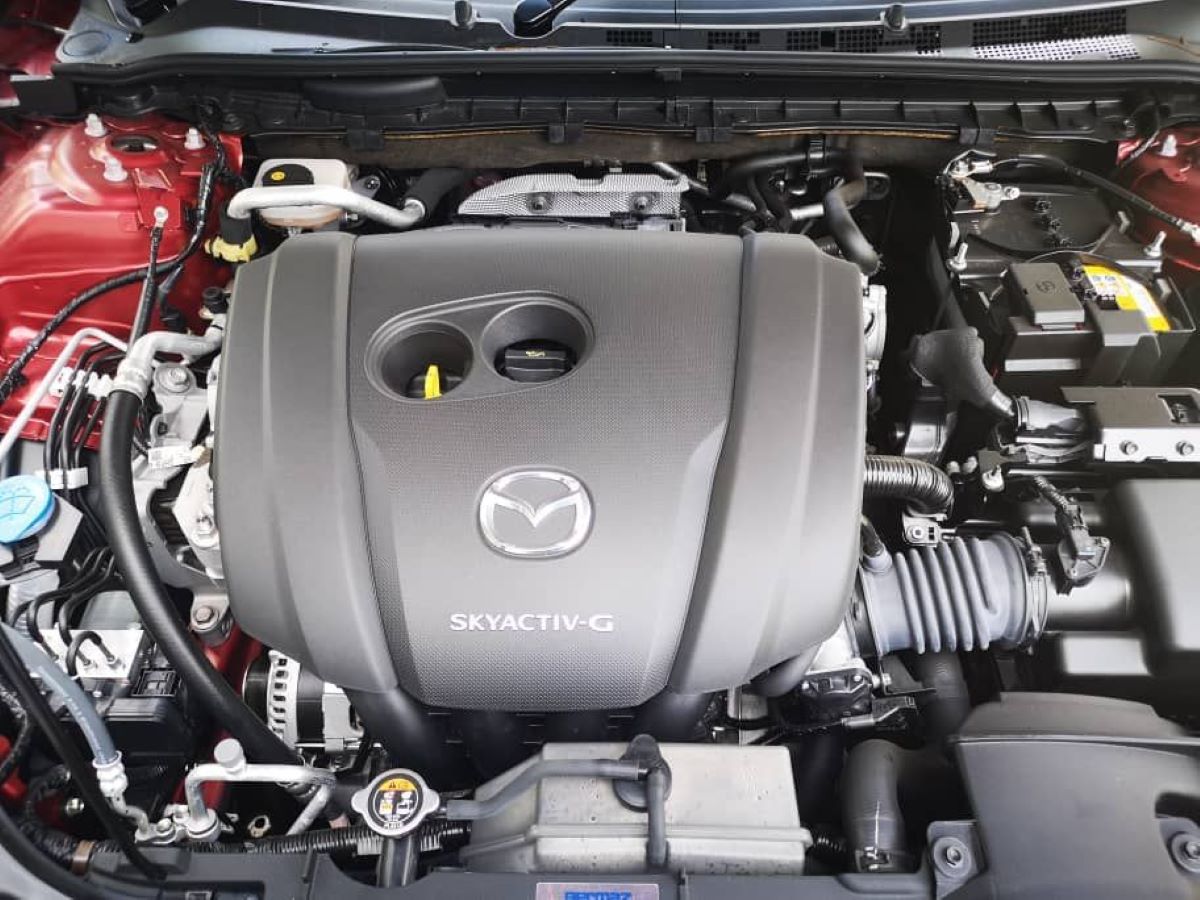
Designed with advanced engineering techniques, the SkyActiv-G 2.5 features a lightweight aluminum cylinder block, which not only reduces the engine’s overall mass but also improves thermal conductivity, aiding in more effective heat management.
Its configuration includes an inline four-cylinder layout and a fuel injection system, which ensures smooth engine performance and precise fuel delivery. The engine uses four valves per cylinder, with a piston stroke of 100 mm and a cylinder bore diameter of 89 mm. It has a high compression ratio of 14:1, contributing to its improved combustion efficiency and fuel economy.
The total engine displacement is 2,488 cc, and it produces 192 horsepower at 5,700 rpm, with a peak torque of 256 Nm at 3,250 rpm. In terms of emissions, the engine complies with Euro 4 environmental standards.
Fuel consumption figures are competitive: 8.5 liters per 100 km in the city, 5.0 liters per 100 km on the highway, and 6.3 liters per 100 km combined. Oil consumption is approximately 800 grams per 1,000 km, and the engine is compatible with 0W-20 and 5W-30 engine oils.
The engine holds 4.5 liters of oil, with around 4.3 liters required during an oil change. Mazda recommends changing the oil every 15,000 kilometers, or every 7,500 kilometers under severe operating conditions. These specifications contribute to the SkyActiv-G 2.5’s reputation for being not just efficient and responsive, but also dependable over the long haul.
3. 1.6L B6 Engine
Used in: First-generation Mazda MX-5 Miata (NA, 1989–1993)
The 1.6L B6 engine in the original Miata is a fan favorite not just for its responsiveness but also its bulletproof reliability.

Originally derived from Mazda’s 323 GTX rally car, this engine was slightly detuned for Miata duty but retained its solid bottom end and overbuilt design.
Many Miata owners rack up 300,000 miles or more with proper care, and parts availability is still strong for rebuilds and restorations.
Mazda’s 1.6L engine, recognized for its compact design and efficient performance, stands out as a notable powerplant that has left a lasting impression in the automotive landscape.
First introduced in the late 1980s, this inline-four engine quickly established a solid reputation for its reliability and versatility, becoming a favored choice across a range of Mazda vehicles.
Its DOHC (Dual Overhead Camshaft) layout was engineered to strike a fine balance between power and fuel efficiency, making it appealing to both daily drivers and enthusiasts looking for performance without sacrificing economy.
A key characteristic of the 1.6L engine is its lightweight construction, which plays a vital role in enhancing vehicle handling and overall driving dynamics. This engine consistently earns praise for its smooth power delivery, which makes it equally comfortable in urban stop-and-go traffic as it is on long highway drives.
Its design also incorporates a high compression ratio, which not only contributes to stronger engine performance but also helps boost fuel economy — an essential factor in maintaining competitiveness in an increasingly efficiency-driven market.
4. 2.3L DISI Turbo Inline-4 (Mazdaspeed)
Used in: 2006–2007 Mazdaspeed6, 2007–2013 Mazdaspeed3
This one may seem like a surprise, as turbocharged engines often suffer from early failures.
However, the 2.3L DISI Turbo (Direct Injection Spark Ignition) is known to hold up remarkably well if not heavily modified.
Enthusiasts who avoid extreme tunes and stick to high-quality synthetic oil and proper warm-up/cool-down routines can see these engines last over 200,000 miles rare for a turbocharged performance engine.
The versatility of the L3-VDT engine has allowed it to be successfully implemented across a diverse range of Mazda vehicles, underscoring its adaptability and strong performance characteristics.
– Mazda 6: The L3-VDT has been a popular powertrain option in the Mazda 6, where it enhances this midsize sedan’s appeal by offering a fine balance of power and efficiency. The turbocharged performance provides the vehicle with a sporty edge while retaining its practicality for daily use.
– Mazda CX-7: In the Mazda CX-7, the engine proves itself as a robust and capable option for a crossover SUV. Its ample torque enables quick acceleration, making it suitable for urban environments as well as light off-road adventures.

– Mazda 3: The Mazda 3, known for its nimble handling and agility, benefits from the L3-VDT’s responsive nature. This pairing results in a lively driving experience, with the engine complementing the car’s lightweight chassis and sharp dynamics.
– Mazda MX-5 Miata: Although not widespread, certain versions of the MX-5 Miata have featured the L3-VDT engine. In this configuration, the engine enhances the car’s already strong reputation as a lightweight, fun-to-drive sports car, delivering even more performance without compromising its essence.
– Mazda Tribute: The Mazda Tribute, a compact SUV, has also housed the L3-VDT under its hood. Here, the engine provides a dependable mix of power and fuel efficiency, making it a great option for families or individuals seeking a versatile everyday vehicle.
Across all of these applications, the L3-VDT engine has proven itself to be both reliable and exciting, playing a vital role in Mazda’s mission to create cars that are engaging to drive yet efficient to own. Its broad compatibility and strong performance credentials cement its status as a key engine in Mazda’s modern history.
5. 2.2L Skyactiv-D Diesel
Used in: 2019–2021 Mazda6, CX-5 (limited availability in North America)
While diesel engines are typically known for longevity, Mazda’s Skyactiv-D had a rocky start due to emissions compliance delays.
But once released, it surprised critics by offering excellent torque, quiet operation, and solid reliability.
In global markets, many Skyactiv-Ds have crossed the 250,000-mile mark, thanks in part to a strong block design and low-stress driving characteristics.
The 2.2 SkyActiv-D engine—designated as SH-VPTR and SH-VPTS—is a 2.2-liter turbo-diesel powerplant developed as the successor to Mazda’s MZR-CD engine.
While the two share a foundation, a major advancement in the SkyActiv-D lies in its significantly reduced compression ratio, which was lowered from 16.3 to 14.0. This figure is unusually low for a diesel engine and is comparable to that of Mazda’s SkyActiv gasoline engines.
This lower compression ratio results in a decrease in cylinder pressure and temperature, which improves overall engine efficiency. However, it also introduces challenges—particularly in the fuel-air mixture ignition during cold starts and warm-up phases.
To address these issues, Mazda engineers implemented new ceramic glow plugs, capable of heating the intake air in the combustion chamber to 1,000°C in just two seconds. Another rare feature in diesel engines used here is a phase change system for the intake valves.

Additionally, the engine employs Variable Valve Lift (VVL) on the exhaust side, allowing the exhaust valves to open slightly during the intake stroke.
This recirculates hot exhaust gases back into the cylinder, raising intake air temperatures and reducing the risk of misfiring during warm-up. This technology ensures efficient cold-weather operation and stable engine behavior during cold starts.
The lower compression ratio also contributes to a reduced mechanical load and minimizes pumping losses, enabling Mazda to lighten key engine components without sacrificing durability or reliability.
The SkyActiv-D 2.2-liter engine is constructed with an aluminum alloy cylinder block, which contributes to the reduced engine weight. It also features two chain-driven balancer shafts designed to counteract secondary inertia forces, resulting in smoother engine operation.
The cylinder head is made of aluminum and features a DOHC layout, with four valves per cylinder operated by roller rocker arms. An integrated exhaust manifold is also incorporated into the head design, which helps in reducing engine weight and size, while also speeding up the catalytic converter’s warm-up process—an important factor in lowering emissions.
Furthermore, the engine is equipped with a modern common-rail fuel injection system, utilizing multi-hole piezo injectors for precise fuel delivery. This upgraded fuel system enhances both efficiency and emissions performance, rounding out the SkyActiv-D as a diesel engine that balances modern engineering, drivability, and eco-conscious design.
Also Read: 5 SUVs With the Best Headlight Throw and 5 With Dark Spots
Mazda Engines That Don’t Surprise With Longevity
or every overachiever, Mazda has also had its share of troubled engines — some plagued by early wear, others burdened by bold but flawed designs (looking at you, rotary). So while this article shines a light on Mazda’s unsung heroes of durability, we’ll also take a hard look at the engines that missed the mark.
1. 1.3L RENESIS Rotary (13B-MSP)
Used in: 2004–2011 Mazda RX-8
Mazda’s rotary engines have always been polarizing, and the RENESIS in the RX-8 is no exception. ]While it’s innovative and rev-happy, it’s also plagued by apex seal wear, oil consumption, and flooding issues.
Many owners report complete engine failure before 100,000 miles, and rebuilding the rotary is a costly and complex process. Even with meticulous care, longevity remains a gamble.
The 13B-MSP Renesis engine is an entirely different and the most advanced Mazda’s rotary engine which was used in the Mazda RX-8 from 2003 to the 2011 year.
It was designed with the target to retain the performance of the turbocharged 13B-REW but at the same time to improve fuel efficiency and reduce emissions. The name Renesis is a combination of Rotary Engine (RE) and Genesis. The abbreviation MSP is Multi Side Ports which make the engine different from its Mazda’s rotary predecessors.

Instead of the 13B-REW, the 13B-MSP is a naturally aspirated (NA) engine. It kept two-rotor layout with a capacity of 1308 cc (79.81 cu in), the same rotor radius and length. Each chamber volume is 654 cc.
The biggest improvement is the 13B-MSP has two exhaust ports per rotor in a side housing instead of one peripheral exhaust port for each chamber on the Mazda RX-7’s engines. That reduces gas flow resistance (almost the double the exhaust port area than of the 13B-REW), eliminates intake/exhaust overlap, and increases thermal efficiency, power, and fuel efficiency.
Now the unburned gases are not carried in the next combustion cycle. The result is more stable and efficient combustion. The 13B-MSP engine was offered in standard and high-output versions. The standard versions have two intake ports per chamber, and high-output – three intake ports per chamber (primary, secondary and auxiliary).
The cross-sectional area for the intake ports is an almost 30% larger compared to the 13B-REW engine. The engine equipped with lighter parts to reduce rotational mass: rotors are lighter by 14%, flywheel – by 20%. That gave a high throttle responds, more power, and allows the engine to rev up to 8200 rpm.
All 13B-MSP engines got Sequential Dynamic Intake System (S-DAIS) for controlling the secondary and auxiliary ports, and the variable intake valve. The primary intake is used at low rpm only.
The secondary port starts operations at 3750 rpm after the shutter valve would open. The high-output engines have the auxiliary port which would open at about 6250 rpm. The variable intake valve is used to lengthen the intake manifold and for increased mid-range torque.
It would open at around 5750 rpm (at 7250 rpm for high-output engines). Variable fresh air duct (FAD) is one more intake system which you can find in the high-output versions of 13B-MSP. It opens a special valve at around 5500 rpm to shorten the air intake manifold. Together with the variable intake valve, they increase power and torque at high engine speeds.
2. 2.3L MZR DISI Turbo (Early Versions)
Used in: 2006–2007 Mazdaspeed6, early Mazdaspeed3 models
Though mentioned above for longevity under ideal conditions, early versions of this engine had turbocharger reliability issues, oil starvation problems, and susceptibility to blow-by and carbon buildup.
Heavily tuned or neglected units often failed early, making it a love-it-or-leave-it engine in Mazda’s performance catalog. Poor PCV system design contributed to its unreliability in earlier iterations.
The 2.3-liter Mazda L3-VDT, also known as the MZR 2.3 DISI Turbo, was produced from 2005 to 2013 and was featured in the performance-oriented MPS versions of the Mazda 3 and Mazda 6, as well as in the CX-7 crossover. This turbocharged engine was also designated under several internal codes, including L3K9 and L3-VET.
It belongs to Mazda’s L-engine family, which includes a range of variants: 1.8L versions such as the L8-DE and L813; 2.0L engines like the LF-DE, LF-VD, LF17, and LFF7; additional 2.3L options including the L3-VE, L3-VDT, and L3C1; and finally the 2.5L L5-VE.
Throughout its production run, the L3-VDT was installed in several notable Mazda models. These include the Mazda 3 MPS BK (2006–2009), the updated Mazda 3 MPS BL (2009–2013), the Mazda 6 MPS GG (2005–2007), the first-generation Mazda CX-7 (2006–2012), and the Mazda MPV III (2006–2010).

From a technical standpoint, the L3-VDT engine has a displacement of 2,261 cc and uses a direct injection fuel system. Power output ranges between 235 and 275 horsepower, with torque figures between 350 and 380 Nm. The engine features an aluminum inline-4 cylinder block and an aluminum 16-valve cylinder head.
It has a bore of 87.5 mm and a stroke of 94 mm, resulting in a compression ratio of 9.5:1. Key components include internal balancer shafts and an intercooler. The engine does not use hydraulic lifters and features a timing chain along with S-VT (Sequential Valve Timing) on the intake side. Boost is supplied by a Warner-Hitachi K04 turbocharger.
Mazda recommends using 5W-30 engine oil, and the engine’s oil capacity is 5.7 liters. It runs on petrol and complies with EURO 4 emissions standards.
Fuel consumption, based on the 2008 Mazda CX-7, is measured at 13.8 L/100 km in city driving, 8.1 L/100 km on the highway, and a combined average of 10.2 L/100 km. The engine is designed to deliver a lifespan of approximately 230,000 kilometers and weighs in at 148 kilograms.
3. 2.5L Skyactiv-G Turbo (Dynamic Pressure Turbo)
Used in: 2018–present Mazda6, CX-5, CX-9
Despite sharing architecture with the reliable 2.5L naturally aspirated Skyactiv-G, the turbocharged version adds complexity that’s led to carbon deposits, oil dilution, and occasional turbo lag or failure.
While not catastrophic for all owners, premature issues have appeared in engines with under 100,000 miles, particularly in vehicles driven mostly on short trips where the engine doesn’t reach optimal temperatures.
The SkyActiv-G 2.5T is a 2.5-liter direct-injection turbocharged gasoline engine and stands as the first turbocharged member of Mazda’s SkyActiv-G engine family. It powers key models such as the midsize crossover SUV CX-9 and the Mazda6 sedan. This engine is fundamentally based on the naturally aspirated SkyActiv-G 2.5, sharing the same bore and stroke dimensions.
However, a notable difference is the lower compression ratio in the turbocharged version, which is set at 10.5:1. Despite the introduction of turbocharging, many components are shared between the two engines, including the crankshaft, balancing shafts, fuel pump, fuel injection system, and oil pump.
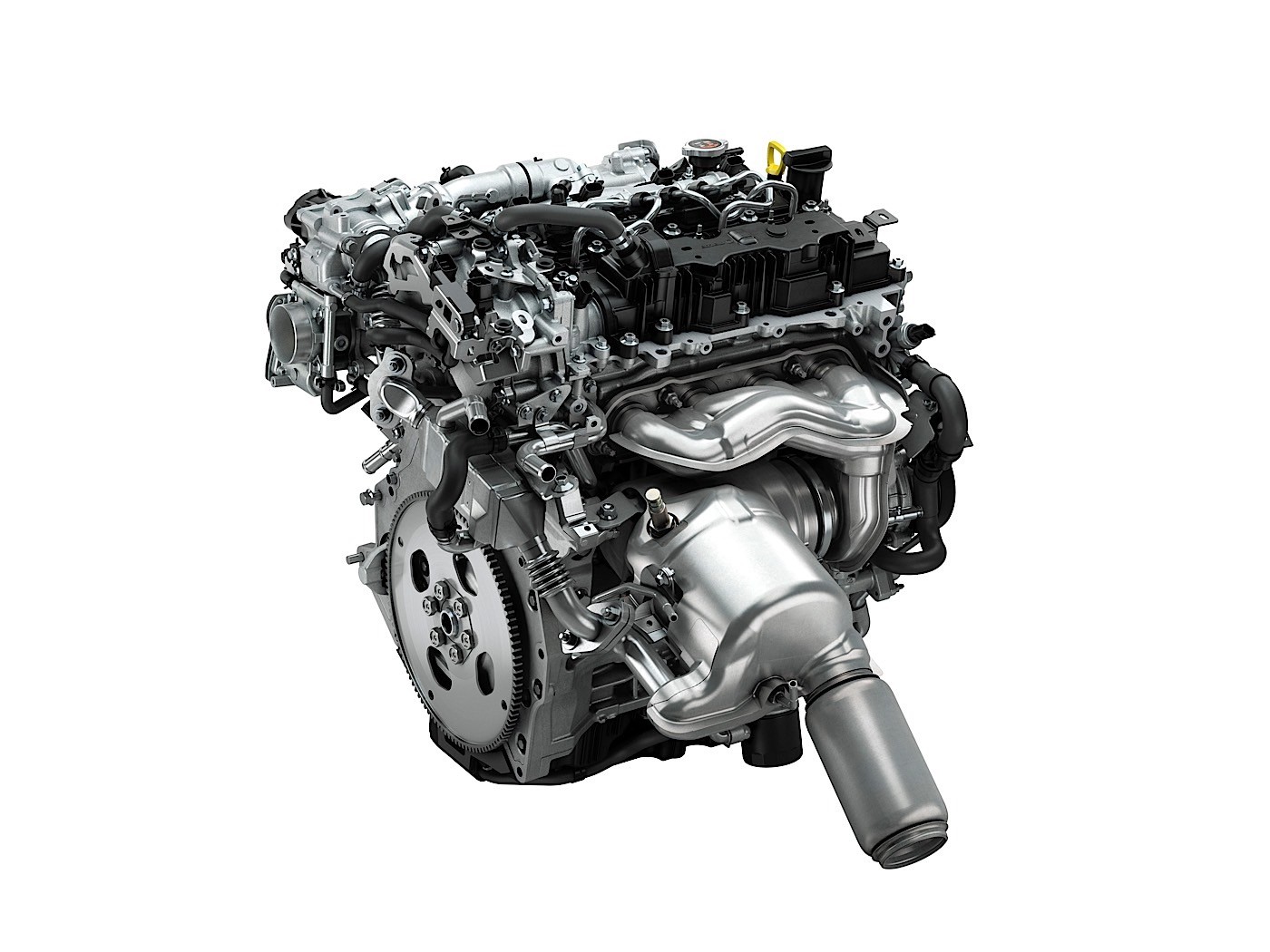
What makes the turbocharged variant particularly compelling are two innovative systems that enhance its performance and efficiency. The first is Mazda’s Dynamic Pressure Turbo system, which effectively mimics the behavior of a variable-geometry turbocharger.
At engine speeds below 1620 rpm, exhaust gases are funneled through narrow channels, maximizing the energy of each pulse to generate a strong driving force for the turbine.
As engine speed increases, additional valves open, allowing the exhaust to flow more freely to the impeller in a manner similar to a conventional turbocharger. This design enables the engine to deliver strong, linear acceleration across the low- to mid-rpm range, eliminating traditional turbo lag.
The second key feature is the implementation of cooled exhaust gas recirculation (EGR). By recirculating exhaust gases that have been cooled from 500 to 100 degrees Celsius, the system reduces combustion temperatures and enhances efficiency.
This cooling effect also makes it feasible to run the engine at a relatively high compression ratio of 10.5, which is uncommon among turbocharged engines. The combination of these technologies results in a power unit that delivers impressive responsiveness and fuel economy, all while maintaining Mazda’s characteristic driving feel.
4. 2.3L MZR Inline-4 (Non-Turbo)
Used in: 2003–2008 Mazda6, Mazda3
This version of the MZR lacks the DISI turbo but still suffers from balance shaft issues, leaky gaskets, and timing chain tensioner problems.
While not as disastrous as the RENESIS, its reliability is inconsistent. Some units last a long time with care, but others experience significant oil leaks and performance loss well before the 150,000-mile mark, especially if maintenance is spotty.
The Mazda L3-VE engine is part of Mazda’s L-series and is a 2.3-liter inline 4-cylinder gasoline engine produced from 2001 to 2010. It is also commonly referred to as the MZR engine. This powerplant is derived from the smaller 2.0-liter LF-DE engine, sharing much of its architecture with notable enhancements to increase displacement and performance.
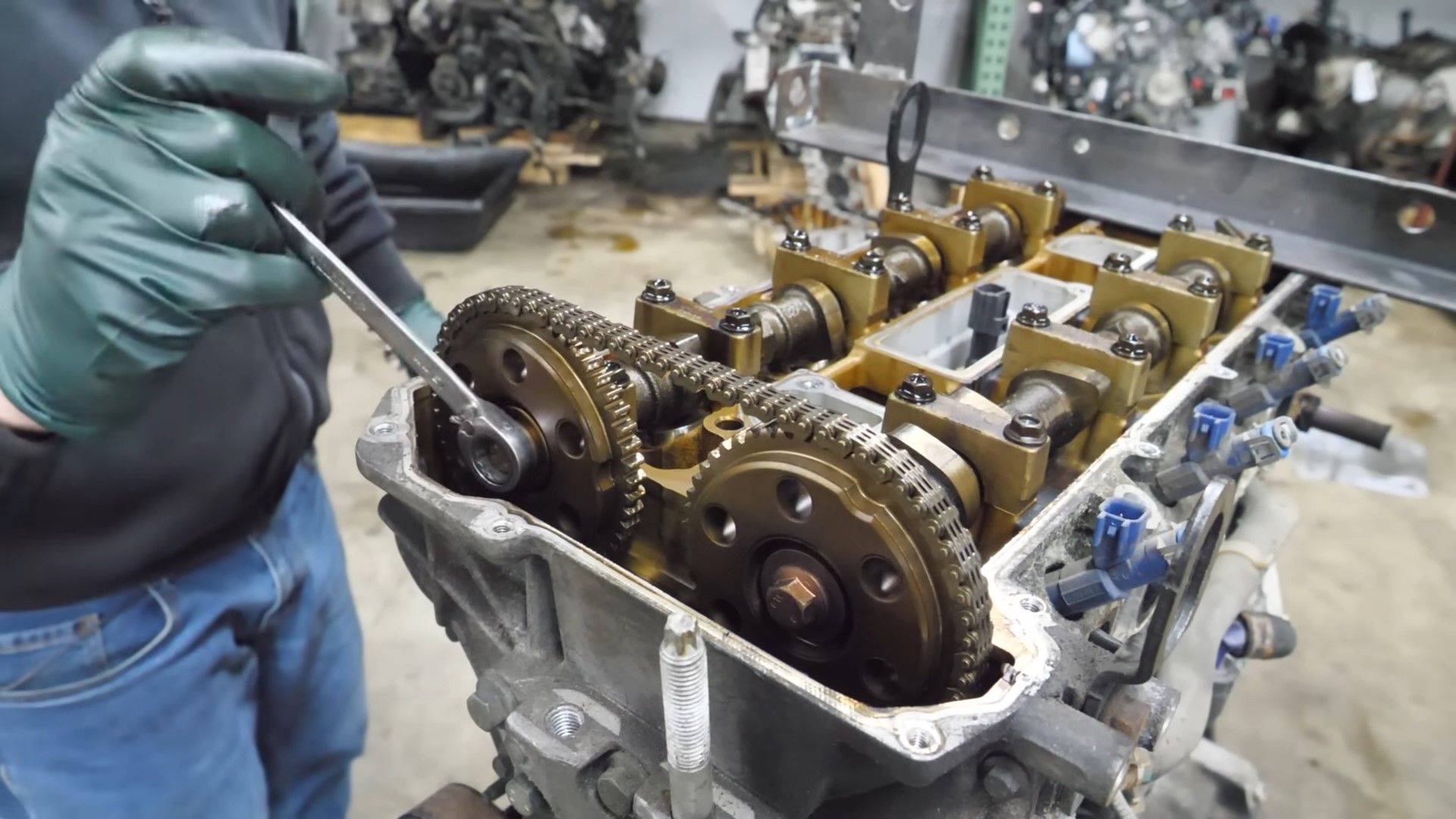
The L3-VE features an aluminum alloy cylinder block that incorporates cast-iron cylinder sleeves, which are cast directly into the block for added durability. While the engine maintains the same bore size as the LF-DE, its stroke has been increased by 10.9 mm, bringing it to 94.0 mm (3.70 in), which contributes to its larger displacement.
At the bottom of the block lies a two-piece housing that contains two balancing shafts. This is a cassette-type balancer unit that is gear-driven by the crankshaft and rotates at twice the crankshaft’s speed to cancel out secondary inertia forces, improving engine smoothness.
The L3-VE engine is equipped with an iron crankshaft featuring eight counterweights and a torsional damper, which helps to minimize vibrations. Additionally, it uses sinter-forged connecting rods and aluminum pistons with graphite-coated skirts, which help reduce internal friction and contribute to the engine’s overall efficiency and reliability.
5. 2.0L Skyactiv-X
Used in: Select 2019–present Mazda3 and Mazda CX-30 (mainly in Europe and Japan)
The Skyactiv-X promised groundbreaking compression-ignition technology and improved fuel economy, but early production engines have struggled with rough idle, poor drivability, and sensor failures.
Longevity is still uncertain due to limited North American availability and a relatively new design, but early reliability issues and a complex hybrid-like ignition system raise red flags for long-term ownership.
More than six years ago, Mazda introduced a technology that appeared poised to redefine the internal combustion engine. Today, however, there’s growing skepticism about whether that breakthrough truly lived up to its promise.
Skyactiv-X, as Mazda calls it, marked the culmination of decades of research and development aimed at making a compression-ignition gasoline engine a practical reality.
For years, automakers and research institutions alike had pursued the concept of a homogeneous-charge compression-ignition (HCCI) engine—one capable of delivering diesel-like fuel economy with significantly lower emissions.

Major manufacturers such as Ford, General Motors, Nissan, Honda, Mercedes-Benz, and Hyundai all developed HCCI prototypes, and even the U.S. Department of Energy provided funding for further exploration. Yet, while most of these efforts eventually faded into the background, Mazda managed to turn the concept into a commercially available engine using gasoline compression ignition.
To understand what makes Skyactiv-X unique, it helps to start with the basics. Gasoline engines typically operate on the Otto cycle, using spark plugs to ignite an air-fuel mixture, either premixed in the intake manifold or directly injected into the cylinder.
But the Otto cycle is intrinsically more efficient than the Diesel cycle, so if we can run a spark-ignition engine at a higher compression ratio, we’ll get more efficiency out of it. So essentially, it’s like ‘How can you make gasoline spark ignition – where it’s the fuel properties that limit you – more like a diesel engine?’”
Mazda has produced several engines that are surprisingly long-lasting, often outshining competitors with clever engineering and robust construction. However, not all engines live up to this reputation.
The key to Mazda engine longevity lies in selecting naturally aspirated, well-proven designs and maintaining them diligently.
Enthusiasts who know what to look for can enjoy hundreds of thousands of miles from the right Mazda powertrain while others may find themselves paying the price for innovation that came too soon.

